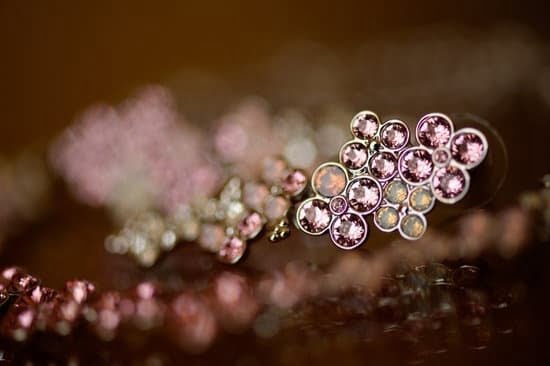Introduction
Jewelers get their jewelry either through manufacturing it themselves or through purchasing it from a supplier. For jewelers who prefer to make their own pieces, the process often starts with designing the piece on paper and sketching what the finished product will look like. Depending on the materials used in the jewelry, jewelers may need to purchase them from a supplier first. Next, they must cut and shape base metals such as silver or gold into desired shapes using metal working tools and techniques. Once these steps are complete, they then set any stones or gems in place to finish the design of the jewelry.
For those who prefer to purchase pre-made jewelry, they can source pieces from several different wholesalers that specialize in various types of jewelry styles, designs and materials. These might include diamond studded or precious gemstones encrusted pieces or simpler sterling silver bands and necklaces. After scanning through numerous catalogues and collections, the jeweler can choose which ones are most likely to appeal to their customers and place an order for whatever catches their eye. Finally, before offering for sale in their store, retailers should inspect each piece for quality assurance purposes so that only top notch designs ultimately make it onto display shelves!
Traditional Sources
Jewelers usually explore local jewelry stores, wholesalers, manufacturers, and distributors for their inventory. Wholesalers are important because it allows jewelers to purchase jewelry directly from the manufacturer, often eliminating the middleman in the process. Wholesalers typically offer great discounts that jewelers can pass along to their customers which makes both parties happy. Jewelers can also get special designs created through manufacturers, have modifications made and custom jewelry crafted with ease.
Manufacturers also create stock designs specifically to natiuonwide discount stores such as Walmart or Staples. They are able to do so because they buy in large bulk orders. These purchases will be passed on to the consumer at lower prices than those generally found at specialty jewelry shops.
Distributors are another source of obtaining stock products jewelsr can resell in their stores.. Distributors act as a middleman between the retailer and key suppliers by offering larger or better discount pricing for individual pieces or collections of items across multiple categories such as gemstones, silver/ gold plated items and sterling silver models bonded with diamond-like stones. These deals make it attractive for small business owners who don’t have the capacity for purchasing raw materials in bulk quantities or negotiating with suppliers
Lastly, another option is exploring antique markets, auctions or even an estate sale for unique pieces that customers may appreciate and seeking out artisans who prefer selling directly instead of working with a traditional wholesaler
Personal Sources
Jewelers often have a number of personal sources from which to purchase their jewelry. These include wholesalers, estate sales, and individual sellers, as well as a variety of specialized suppliers for gemstones and components. By creating business relationships with these providers, jewelers are able to secure the best prices and quality materials for their designs. This means that they can offer shoppers a wide range of merchandise while still keeping prices reasonable. Jewelers may also source items from coast-to-coast or even international dealers who typically operate online or via catalogs. Additionally, many suppliers provide custom products and services tailored to specific projects. Some jewelers may have access to semi-precious stones as well as antique or vintage pieces which can be used to create unique jewelry designs. Through personal contacts, jewelers are able to get access to one-of-a-kind or niche items that would otherwise be unavailable or difficult to find elsewhere.
Trade Shows
Jewelers can attend trade shows to get their jewelry. At these trade shows, they will have the opportunity to network with international jewelry designers and vendors from all over the world. Jewelers can purchase products from these international vendors and then customize them for their customers back home for retail sale. They may also be able to access exclusive product lines not available anywhere else on the market. Additionally, most jewelry trade shows are accompanied by seminars and conferences that help to educate jewelers while providing them with industry knowledge they wouldn’t normally have access to. Furthermore, at many of these conventions, there is usually a fashion show or showroom showcasing the latest trends in accessories like jewellery designs, materials, colours and shapes from which a jeweler may be able to obtain inspiration for unique pieces of their own design.
Artisan Markets
Jewelers often source their jewelry from artisan markets, where they can find unique and handmade pieces that cannot be found in larger retailers. These artisan markets are typically small bazaars or even online stores, and they often have vendors who create one-of-a-kind pieces using a variety of natural stones and metals. Jewelers also source their pieces from high-end manufacturers like Cartier, Tiffany & Co., and Bulgari. They purchase these luxury items at wholesale prices to keep their costs low while still offering quality jewelry to their customers. Additionally, some jewelers choose to make the jewelry themselves or customize existing pieces for customers. By having access to both traditional outlets and artisans, jewelers can offer an impressive variety of products.
Global Sourcing & Outsourcing
Jewelers have the ability to source and purchase jewelry from many different sources across the globe. This gives them access to new designs, materials, and styles of jewelry that could not be found in their local area. They can either buy directly from small artisan creators, or through larger wholesale distributors. With global sourcing, jewelers are able to find unique pieces that they would not normally be able to order in bulk. Additionally, they can outsource some aspects of production with overseas companies that can produce one-of-a-kind pieces at a fraction of the cost of making them within their own countries. By outsourcing production services to other countries where labor costs may be lower or materials may be more readily available, jewelers can save on costs while increasing the selection of jewelry available for customers. Global sourcing and outsourcing give jewelers increased control over their inventory and enables them to provide customers with higher quality goods at competitive prices.
Online Sources
Jewelers rely on a variety of methods to acquire the pieces necessary to fill their stores or online businesses. Online sources are becoming increasingly popular for jewelers, as they can use the power of the internet to source jewelry from some of the leading designers in the industry. This includes obtaining stamped pieces from well-known manufacturers, or connecting with independent craftsmen who can create unique custom-made items that meet their customers’ specific needs. Additionally, collaborations between retailers and designers on special lines or collections can also be found online. Some websites also provide access to wholesale vendors offering selection at discounted prices, perfect for buyers looking for larger quantities of quality pieces at lower costs. Overall, using various forms of online sourcing provides jewelers with a much larger pool of items that they can include in their offerings.
Shopping Tips & Trends
Jewelers get their jewelry in a variety of ways. Firstly, they can create it themselves by cutting and setting precious gems and metals into beautiful pieces of jewelry. Secondly, jewelers often buy from other jewelry design houses that specialize in certain types of fine jewelry. Thirdly, many jewelers will purchase pieces from trade shows and auctions around the world. Lastly, some jewelers will source gemstones such as diamonds directly from mines or reputable dealers to add an extra element of authenticity to their pieces. Being knowledgeable about the current trends in jewelry design is essential for buying quality pieces of jewelry, as well as understanding the meaning behind different gemstones cuts, metal types and precisely crafted settings. It’s also important to remember that some jewelers may have relationships with specific suppliers so they can have access to unique stones or styles not found elsewhere. In general, when shopping for jewelry it’s wise to research various jewelers before making a selection based on price point or style since these pieces are often investments that should last for years to come.
Conclusions
Jewelers acquire their jewelry from many sources. These include retail and wholesale piece makers, gem dealers, estate sales, auctions, and private collections. Jewelers often collaborate with designers to create exclusive custom pieces for their customers. They may also source from metalsmiths and lapidary artisans whose talents can provide the highest quality of craftsmanship. There are many options available to jewelers who are looking for unique materials or products that have a specialized look. Keeping up with trends in the industry as well as individual preferences will help them determine which sources will be the most advantageous and cost-effective when acquiring inventory for their stores or boutiques.

Welcome to my jewelry blog! My name is Sarah and I am the owner of this blog.
I love making jewelry and sharing my creations with others.
So whether you’re someone who loves wearing jewelry yourself or simply enjoys learning about it, be sure to check out my blog for insightful posts on everything related to this exciting topic!





